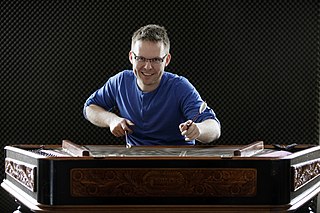Hungary has made many contributions to the fields of folk, popular and classical music. Hungarian folk music is a prominent part of the national identity and continues to play a major part in Hungarian music. The Busójárás carnival in Mohács is a major folk music event in Hungary, formerly featuring the long-established and well-regarded Bogyiszló orchestra. Instruments traditionally used in Hungarian folk music include the citera, cimbalom, cobza, doromb, duda, kanászkürt, tárogató, tambura, tekero and ütőgardon. Traditional Hungarian music has been found to bear resemblances to the musical traditions of neighbouring Balkan countries and Central Asia.
Romania has a multicultural music environment which includes active ethnic music scenes. Traditional Romanian folk music remains popular, and some folk musicians have come to national fame.

Cegléd is a city in Pest county, Hungary, approximately 70 km (43 mi) southeast of the Hungarian capital, Budapest.

Controlled-access highways in Hungary are dual carriageways, grade separated with controlled-access, designed for high speeds. The legislation amendments define two types of highways: motorways and expressways.

Ödön Lechner was a Hungarian architect, one of the prime representatives of the Hungarian Szecesszió style, which was related to Art Nouveau in the rest of Europe, including the Vienna Secession. He is famous for decorating his buildings with Zsolnay tile patterns inspired by old Magyar and Turkic folk art, which are combined with modern materials such as iron.

Besh o droM is a Balkan music group. Their music blends folk and contemporary instruments (including the cymbalom and the EWI, in styles ranging from punk-rock to world music. They acknowledge particular influences from Transylvanian, Jewish, Turkish, Afghan, Egyptian, Lebanese, Armenian, Bulgarian, Romanian, Macedonian and Greek musical traditions.

Kati Kovács, is a Ferenc Liszt and Kossuth Award-winning Hungarian pop-rock singer, performer, lyricist and actress.

Public roads in Hungary are ranked according to importance and traffic as follows:

Kálmán Balogh is a Hungarian cimbalom player and leader of Kálmán Balogh's Gypsy Cimbalom Band.

Bálint Máté Vécsei is a Hungarian professional footballer who plays as a midfielder for Hungarian club Paksi SE.

Ági Szalóki is a Hungarian folk singer. She has toured worldwide with world music and folk revival bands such as Besh o droM and Ökrös.

Balint Tarkany-Kovacs is one of Hungary’s foremost cimbalom players, who plays traditional Hungarian music and ethnojazz as well. He is the founder of the band Tarkany Muvek.
Fonó Zenekar, the Fonó Folk Band is a Hungarian folk band, playing traditional Hungarian music.
Hungarian pop is the pop music scene of Hungary. It is often associated with Rezső Seress's song "Gloomy Sunday" which was covered by numerous artists. The most notable artists include Zsuzsa Koncz, Kati Kovács, János Bródy, Zorán, Péter Máté and famous bands like Illés, Quimby, Republic,Locomotiv GT, Omega, Neoton Família. Among the new talents are Azariah, Krúbi, and Dzsúdló.
The Hungarian Fencing Federation is the national organization for fencing in Hungary. It was founded in 1914 and has been affiliated to the International Fencing Federation since 1917. Its headquarters is in Budapest.
Viktor Tóth, alto saxophonist, composer and orchestra leader, has been awarded Jazz Musician of the Year several times. One of the top figures of the young generation of the contemporary Hungarian jazz scene, his performance style bridges styles, is improvisation-centred, "soaring" and filled with spirituality.

Péter Dobszay Hungarian conductor and organist, winner of the Junior Prima award. He is the artistic director and lead conductor of the Alba Regia Symphony Orchestra, music director of the National Theatre of Szeged, and lecturer at the Liszt Ferenc Academy of Music. He has conducted almost all professional Hungarian symphony orchestras in a wide variety of genres and has performed both as a church organist and as a concert organist throughout Europe and Asia.
Miklós Bendzsel is a mechanical engineer, engineer-economist and former president of the Hungarian Intellectual Property Office (HIPO).










